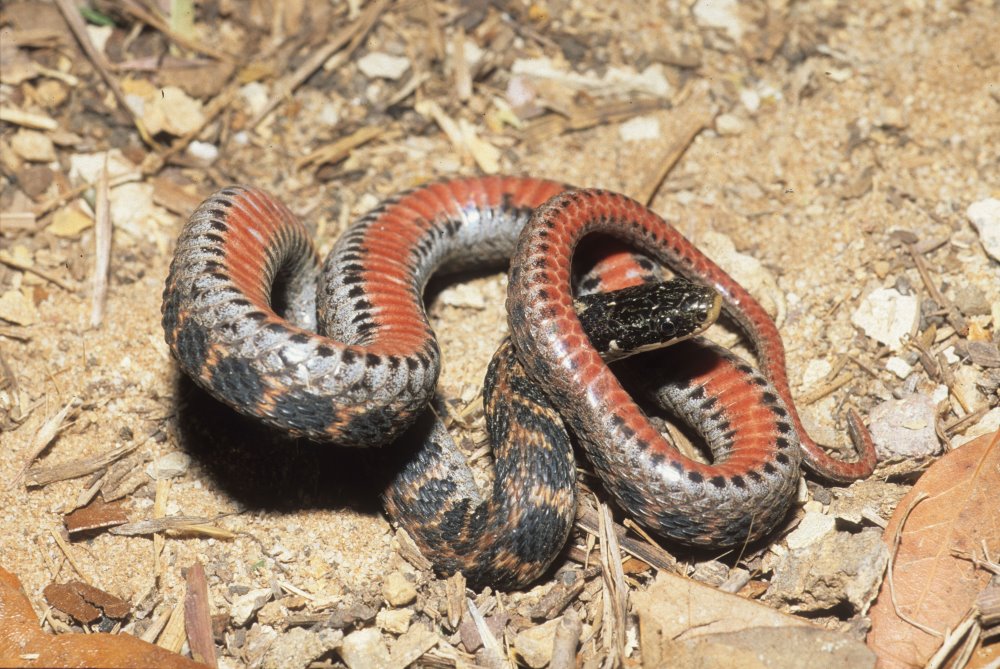
The black dot on both sides of each ventral scute are a surefire way to identify a Kirtland's snake.
just read a short poem by Taylor West about the little natricid known as the Kirtland’s snake,
Clonophis kirtlandi.
In her poem, a mere 8 short lines, she referred to a food (slugs), habitat (burrows of mudbugs (crayfish)), crepuscular habits, and the ample supply of musk manufactured and spread by the snake when it is handled.
In other words, it was accurate wording to portray a wonderful and poorly known little (rarely more than 20” and often less than 18”) snake that calls the states of IL, IN, and OH home but that does extend its range a bit beyond the borders of those states.
I’ll take this opportunity to add a few sentences about Kirtland’s snake.
The habitat of the Kirtland’s snake is of a broader scope than just mudbug burrows. I have found them beneath discarded newspapers, paper bags, and cardboard in vacant lots in suburban neighborhoods, under debris in city parks, and under riverbank rocks. They have also been found in pastures and other grassy habitats, again most often beneath debris, and where they occur the ground is usually damp.
Besides slugs this little snake feeds readily on earthworms and one I was photographing disgorged a large leech.
The ground color of Kirtland’s snake may vary from gray to reddish brown and a lighter vertebral stripe is often present. Two alternating rows of black spots range along each side and the head is black with white lips and chin. The coral to terra cotta belly is lightest anteriorly and is bordered on each side by a row of small black spots.
This snake, once considered a water snake, is now protected throughout its range. And yes, like many (if not most) snakes, Kirtland’s snake is not at all reluctant to smear a handler with musk that is produced in glands just inside the cloaca.
Thanx for that poem, Taylor.
A light vertebral stripe and alternating black lateral spots are also definitive but may not be readily discernible.

Slugs, earthworms, and perhaps leeches, are the preferred edibles of the Kirtland's snake.




